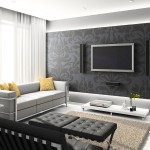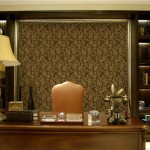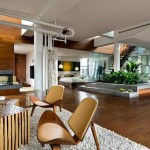Wallpapers are materials that cover and decorate the interior walls in a residential or commercial space
Based on their looks, wallpapers are of two major types;
PLAIN – This is also called a lining paper, which has no patterns or drawings on it. It can either be painted over, or used to cover wall defects and unsightly surfaces.
PATTERNED – These wallpapers have a pattern or drawing on them, either a single non-repeating design or one with continuous repeated patterns.
If you have decided to put the home decor wall paper in your room instead of the wall paints then you must also be wondering which material is the best. Here is some insight into different types of wallpaper materials.
VINYL WALLPAPERS
Vinyl wallpapers have a little shiny look, are washable, easy to install, removable, light-resistant, cheaper and very durable. They can be used across all rooms, including kitchens and bathrooms which are more moisture prone.
However, because of their plastic coating, they don’t allow walls to breathe and may give out toxic fumes. They must never be placed in bedrooms and ill-ventilated spaces.
TRADITIONAL WALLPAPER
The most popular and frequently used type, traditional wallpaper is either single or double layered, has cellulose as it base and very ecology friendly. Since it is natural paper, these let walls breathe, are affordable and accessible and can be used in bedrooms and dining rooms.
These wallpapers cannot withstand moisture, and fade away due to sun exposure or prolonged use. They are also not washable and may have to be changed frequently.
EMBOSSED WALLPAPERS
Unlike patterns printed on paper, embossing occurs when designs are pressed onto the paper backing thereby showcasing a raised textural effect. Embossed wallpaper hides wall flaws and unevenness. They can be used over slightly damaged walls, light cracks and other minor irregularities. They are easy to install, easy to remove and washable.
Embossed wallpapers may not hold for very long, since the edges start to bend pull out over time. They can also get hard to peel off eventually.
NON-WOVEN WALLPAPER
A recent trend in wallpaper decorating, non-woven wallpapers are made of a blend of synthetic and natural fibres. They are therefore breathable and washable. These are already used in furnishings and upholstery and other products like teabags and gauze. This wallpaper is also good for kitchens and bathrooms because of their porosity
FIBREGLASS WALLPAPER
Glass fibers when woven and bonded together make for a very strong sheet material. They are stronger and provide additional reinforcement to the wall. Since they are made from non-toxic by-products such as dolomite, soda and lime, they are eco-sensitive too.
BAMBOO WALLPAPER
Made of bamboo, an environmentally friendly natural product. They do not change the colour for a long period of time. Because bamboo is a “natural” material, it can be affected by high moisture and isn’t very cleanable.
LIQUID WALLPAPER
They consist of cellulose and cotton fibre. Have to be applied in a liquid form with the help of a special pallet. Such wallpaper have a high level from the clutch surface that allows their use even in rooms with uneven walls, defects and cracks on the surface. Repair of damaged sites wallpaper is quite easy: you should only remove coating from this area, mix with water, add fresh filler and apply spatula back. It takes 24 hours to fully dry. It is ecological and easy to use.
If you’re decorating a room but don’t just want plain walls, wallpaper is the choice for you. With hundreds of colour, pattern and texture options though, taking your pick can be a confusing process










